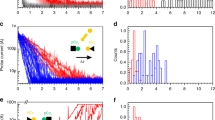Abstract
Nature has engineered a universe of redox proteins to efficiently control the oxidation and reduction of substrates and to convert redox energy into a delocalized transmembrane proton gradient power source. Some rapid physiologically relevant electron transfers are rate limited by electron tunneling. Distance appears to be the principle means naturally selected to control the speed of electron tunneling; free energy and reorganization energy can play important auxiliary roles. Thus, an electron from a biological redox center can tunnel in any direction and is likely to reduce the closest redox center with a favorable free energy. Although it is clearly possible to facilitate electron tunneling by designing covalent bridges in the regions between donors and acceptors, this does not seem to be a strategy that evolution has used. Evolutionary mutagenic adjustment of a bridge-like quality of the amino acid medium may be difficult in the face of heavy selection on the folding, stability and other properties of the protein medium. Repositioning cofactors by even a few angstroms has more profound effects on promoting and retarding rates, independent of the structure of the amino acid medium.
Similar content being viewed by others
Author information
Authors and Affiliations
Additional information
Received: 12 January 1997 / Accepted: 5 February 1997
Rights and permissions
About this article
Cite this article
Moser, C., Page, C., Chen, X. et al. Biological electron tunneling through native protein media. JBIC 2, 393–398 (1997). https://doi.org/10.1007/s007750050149
Issue Date:
DOI: https://doi.org/10.1007/s007750050149




